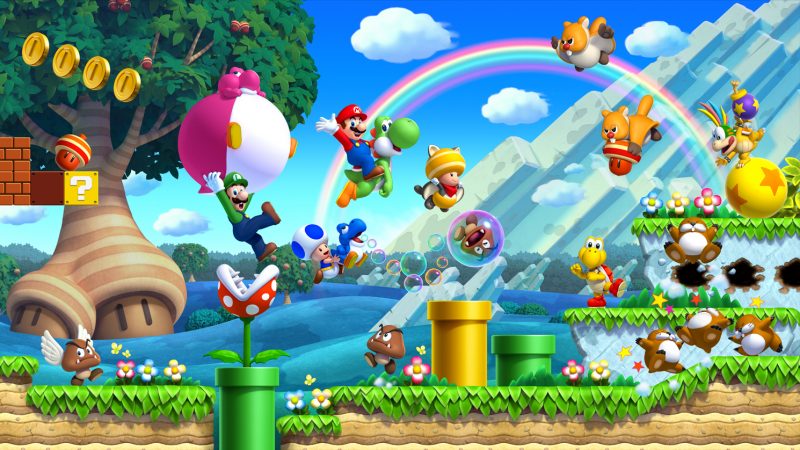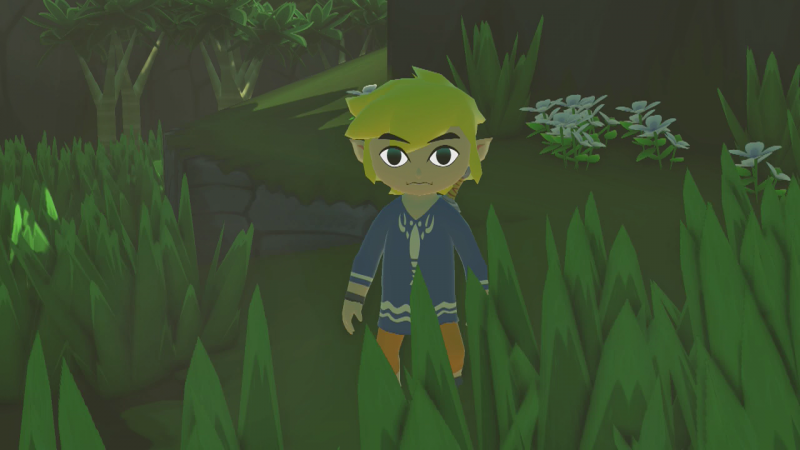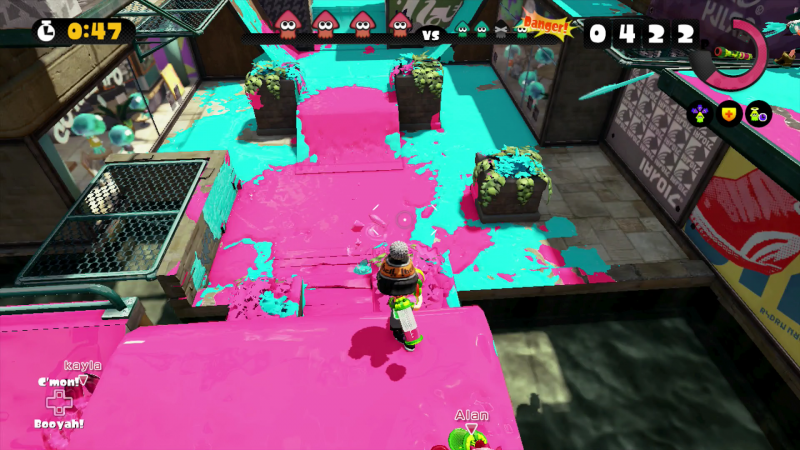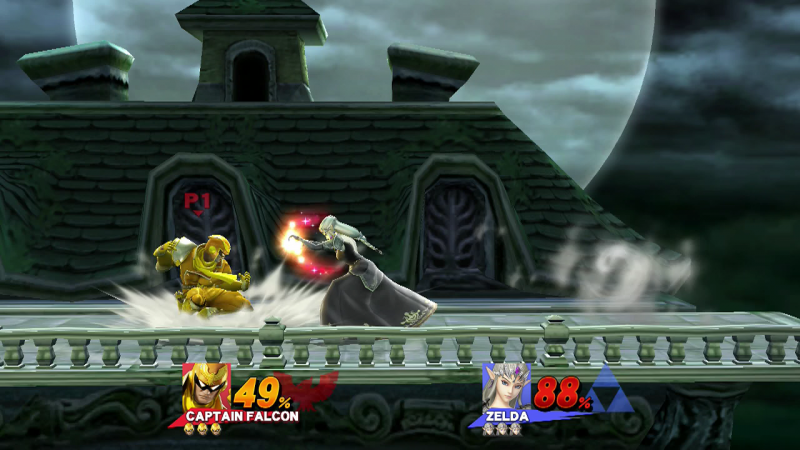The Life and Times of the Wii U
"Now we're playing with power!"
With the Nintendo Switch entering the market, it’s time to take a look back at Nintendo’s previous console, the Wii U. A fun novelty system with huge ambitions but overall lacked focus. Being Nintendo’s first “HD” console, the Wii U had a lot to live up to, but never reached its peak until the very end of its life. This idea of a console/handheld hybrid was wildly appealing, even now with the Switch. It was exciting to see from the beginning, but this wasn’t enough to make sales. Poor third-party support, lack of big exclusives titles, and a confusing marketing strategy pretty much doomed it from the start. It’s a shame, especially since I enjoyed the system for as long as I had it.
 The Beginning
The Beginning
When the Wii U was first unveiled at E3 2011, the response was negative. Nintendo’s
stock dropped the day it was announced and it didn’t get better from there. Most people at the time didn’t even know what exactly the “Wii U” was supposed to be. The name alone managed to alienate a lot of people. Confusing the existing Nintendo customers and turning off non-Nintendo folks who haven’t cared for the original Wii. Not only this, but Nintendo did nothing to really help explain this to the consumers.
The launch of the Wii U in 2012 was weak. Its early launch titles were lackluster outside of
New Super Mario Bros U, which was good, but not revolutionary. As for the hardware itself, the memory space was low – either 8 GB or 32 GB – which were laughable compared to what Sony and Microsoft had to offer. The Gamepad controller was also with its issues. Featuring a six-inch touchscreen, it mimicked the Nintendo DS – where the top screen was the television and the bottom was the Gamepad. The Gamepad, however, was large and clunky making it uncomfortable to use during games. I myself avoided using it at all costs by purchasing a vastly superior Pro controller. The idea of playing games on the Gamepad is nice, but its size and battery life made the use seem situational.
But what really drove the final steak to the Wii U’s heart was its overall lack of third-party support. Third party companies such as EA were on board, but by the summer of 2013, EA announced they were
pulling support. This led to big AAA games continuing on Sony and Microsoft consoles, but not having Wii U versions. This meant that the “hardcore” audience that Nintendo initially wanted had no reason to buy the system.
 The Slow Climb
The Slow Climb
Following its first price cut and the release of
The Legend of Zelda: The Wind Waker HD in 2013, Wii U sales
began to climb. Not only did the Wii U get its first
Zelda port, but the Virtual Console launched during 2013 featuring NES and SNES games. Now that the Wii U was getting some first party support, the console began its slow climb to greatness.

It only got better from here. The Wii U’s library began to grow as more and more first-parties started hitting the market. Not only was the retail market increasing, but the digital market as well. In 2014,
Mario Kart 8 brought friends and families together and increased Wii U sales. Later that same year,
Super Smash Bros for Wii U increased sales even more. With some familiar franchises in their library, the Wii U began to get the recognition it deserved. Other great games such as
Donkey Kong: Tropical Freeze,
Bayonetta 2,
Splatoon, and
Super Mario 3D World furthered proved that the Wii U was capable of having a strong library.
As for digital games, 2014 marked the release of Game Boy Advance games on the Nintendo eShop. Following this, Nintendo 64, DS, and original Wii games joined the lineup making the Wii U the place to play classic Nintendo games.
 The Final Verdict
The Final Verdict
With all this laid out, it’s easy to understand why the Wii U floundered in the long run. Selling only thirfeen million units in the current console generation (compared to 20 million and 50 million by Microsoft and Sony, respectively). The mistakes Nintendo made were clear, but I’m still glad I have one. It wasn’t a perfect system, but it had its moments. I enjoyed playing
Smash Bros,
Mario Kart, and
3D World with my friends and it never got old.
It looks like the Nintendo Switch has the potential to become what the Wii U wanted to be. Though it wasn’t the success Nintendo wanted, the Wii U will hopefully be the stepping stone for something greater. Even after the Switch eventually replaces its place in my home, I will never forget the times I had with it.
 The Beginning
When the Wii U was first unveiled at E3 2011, the response was negative. Nintendo’s stock dropped the day it was announced and it didn’t get better from there. Most people at the time didn’t even know what exactly the “Wii U” was supposed to be. The name alone managed to alienate a lot of people. Confusing the existing Nintendo customers and turning off non-Nintendo folks who haven’t cared for the original Wii. Not only this, but Nintendo did nothing to really help explain this to the consumers.
The launch of the Wii U in 2012 was weak. Its early launch titles were lackluster outside of New Super Mario Bros U, which was good, but not revolutionary. As for the hardware itself, the memory space was low – either 8 GB or 32 GB – which were laughable compared to what Sony and Microsoft had to offer. The Gamepad controller was also with its issues. Featuring a six-inch touchscreen, it mimicked the Nintendo DS – where the top screen was the television and the bottom was the Gamepad. The Gamepad, however, was large and clunky making it uncomfortable to use during games. I myself avoided using it at all costs by purchasing a vastly superior Pro controller. The idea of playing games on the Gamepad is nice, but its size and battery life made the use seem situational.
But what really drove the final steak to the Wii U’s heart was its overall lack of third-party support. Third party companies such as EA were on board, but by the summer of 2013, EA announced they were pulling support. This led to big AAA games continuing on Sony and Microsoft consoles, but not having Wii U versions. This meant that the “hardcore” audience that Nintendo initially wanted had no reason to buy the system.
The Beginning
When the Wii U was first unveiled at E3 2011, the response was negative. Nintendo’s stock dropped the day it was announced and it didn’t get better from there. Most people at the time didn’t even know what exactly the “Wii U” was supposed to be. The name alone managed to alienate a lot of people. Confusing the existing Nintendo customers and turning off non-Nintendo folks who haven’t cared for the original Wii. Not only this, but Nintendo did nothing to really help explain this to the consumers.
The launch of the Wii U in 2012 was weak. Its early launch titles were lackluster outside of New Super Mario Bros U, which was good, but not revolutionary. As for the hardware itself, the memory space was low – either 8 GB or 32 GB – which were laughable compared to what Sony and Microsoft had to offer. The Gamepad controller was also with its issues. Featuring a six-inch touchscreen, it mimicked the Nintendo DS – where the top screen was the television and the bottom was the Gamepad. The Gamepad, however, was large and clunky making it uncomfortable to use during games. I myself avoided using it at all costs by purchasing a vastly superior Pro controller. The idea of playing games on the Gamepad is nice, but its size and battery life made the use seem situational.
But what really drove the final steak to the Wii U’s heart was its overall lack of third-party support. Third party companies such as EA were on board, but by the summer of 2013, EA announced they were pulling support. This led to big AAA games continuing on Sony and Microsoft consoles, but not having Wii U versions. This meant that the “hardcore” audience that Nintendo initially wanted had no reason to buy the system.
 The Slow Climb
Following its first price cut and the release of The Legend of Zelda: The Wind Waker HD in 2013, Wii U sales began to climb. Not only did the Wii U get its first Zelda port, but the Virtual Console launched during 2013 featuring NES and SNES games. Now that the Wii U was getting some first party support, the console began its slow climb to greatness.
The Slow Climb
Following its first price cut and the release of The Legend of Zelda: The Wind Waker HD in 2013, Wii U sales began to climb. Not only did the Wii U get its first Zelda port, but the Virtual Console launched during 2013 featuring NES and SNES games. Now that the Wii U was getting some first party support, the console began its slow climb to greatness.
 It only got better from here. The Wii U’s library began to grow as more and more first-parties started hitting the market. Not only was the retail market increasing, but the digital market as well. In 2014, Mario Kart 8 brought friends and families together and increased Wii U sales. Later that same year, Super Smash Bros for Wii U increased sales even more. With some familiar franchises in their library, the Wii U began to get the recognition it deserved. Other great games such as Donkey Kong: Tropical Freeze, Bayonetta 2, Splatoon, and Super Mario 3D World furthered proved that the Wii U was capable of having a strong library.
As for digital games, 2014 marked the release of Game Boy Advance games on the Nintendo eShop. Following this, Nintendo 64, DS, and original Wii games joined the lineup making the Wii U the place to play classic Nintendo games.
It only got better from here. The Wii U’s library began to grow as more and more first-parties started hitting the market. Not only was the retail market increasing, but the digital market as well. In 2014, Mario Kart 8 brought friends and families together and increased Wii U sales. Later that same year, Super Smash Bros for Wii U increased sales even more. With some familiar franchises in their library, the Wii U began to get the recognition it deserved. Other great games such as Donkey Kong: Tropical Freeze, Bayonetta 2, Splatoon, and Super Mario 3D World furthered proved that the Wii U was capable of having a strong library.
As for digital games, 2014 marked the release of Game Boy Advance games on the Nintendo eShop. Following this, Nintendo 64, DS, and original Wii games joined the lineup making the Wii U the place to play classic Nintendo games.
 The Final Verdict
With all this laid out, it’s easy to understand why the Wii U floundered in the long run. Selling only thirfeen million units in the current console generation (compared to 20 million and 50 million by Microsoft and Sony, respectively). The mistakes Nintendo made were clear, but I’m still glad I have one. It wasn’t a perfect system, but it had its moments. I enjoyed playing Smash Bros, Mario Kart, and 3D World with my friends and it never got old.
It looks like the Nintendo Switch has the potential to become what the Wii U wanted to be. Though it wasn’t the success Nintendo wanted, the Wii U will hopefully be the stepping stone for something greater. Even after the Switch eventually replaces its place in my home, I will never forget the times I had with it.
The Final Verdict
With all this laid out, it’s easy to understand why the Wii U floundered in the long run. Selling only thirfeen million units in the current console generation (compared to 20 million and 50 million by Microsoft and Sony, respectively). The mistakes Nintendo made were clear, but I’m still glad I have one. It wasn’t a perfect system, but it had its moments. I enjoyed playing Smash Bros, Mario Kart, and 3D World with my friends and it never got old.
It looks like the Nintendo Switch has the potential to become what the Wii U wanted to be. Though it wasn’t the success Nintendo wanted, the Wii U will hopefully be the stepping stone for something greater. Even after the Switch eventually replaces its place in my home, I will never forget the times I had with it.